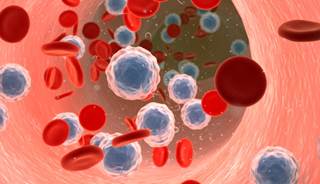
Recently Diagnosed or Relapsed? Stop Looking For a Miracle Cure, and Use Evidence-Based Therapies To Enhance Your Treatment and Prolong Your Remission
Multiple Myeloma an incurable disease, but I have spent the last 25 years in remission using a blend of conventional oncology and evidence-based nutrition, supplementation, and lifestyle therapies from peer-reviewed studies that your oncologist probably hasn't told you about.
Click the orange button to the right to learn more about what you can start doing today.
- You are here:
- Home »
- Blog »
- Multiple Myeloma »
- Myeloma Standard-of-Care –
Myeloma Standard-of-Care –

The FDA applies their standard-of-care therefore taking a cookie cutter approach and treating all newly diagnosed patients the same regardless of age, stage, diagnostics, symptoms, etc.
How does the FDA’s standard-of-care approach to multiple myeloma treatment apply to the statement below?
Once or twice a year someone sends me an angry comment on PeopleBeatingCancer.org. I try to think carefully about what the person is saying and why they may be saying it. I reply to all questions, positive or negative.
Ironically, the angry comment accuses me (PeopleBeatingCancer) of using a “cookie cutter” approach to managing multiple myeloma. I say this is ironic because it is the opposite. It is conventional oncology’s standard-of-care approach to mm treatment that is a cookie cutter approach.
The person’s idea of “cookie cutter” approach to multiple myeloma illustrates the need for the PeopleBeatingCancer Multiple Myeloma Cancer Coaching Program. Years of experience have taught me that there is much more to the FDA’s standard-of-care approach to managing your multiple myeloma than:
- triplet induction therapy followed by
- autologous transplantation and, in most cases,
- lenalidomide maintenance…
In short, conventional oncology focuses on taking an aggressive, toxic, chemical approach to managing multiple myeloma. For the record, using toxicity to try to manage this incurable blood cancer is a huge challenge.
I credit conventional MM oncology in many ways. I really do. But it is important to point out that conventional oncology’s one-size-fits-all, standard-of care approach to applying chemicals to multiple myeloma doesn’t work well if you are not the average patient.
“This is offensive. If there is one thing every MM oncologist will say it is that EVERY case of myeloma presents different. There is no cookie cutter treatment for MM. I’m happy that you’ve been healthy for so many years, but charging $99 to vulnerable patients and caregivers is unconscionable. Each patient’s journey through this disease is personal and unique.”
- age,
- stage,
- diagnostics,
- symptoms etc.
Short overview on the current standard of treatment in newly diagnosed multiple myeloma
“The treatment of newly diagnosed multiple myeloma has changed dramatically over the past 20 years, from near uniform application of chemotherapy to a patient performance status- and risk-based approach.
Furthermore, initiation of treatment criteria have evolved from a pure end-organ damage-based definition to include risk factors of transformation to frank myeloma. Besides, the mainly cytogenetically defined Multiple Myeloma (MM) risk status, transplant eligibility of patients still serves primarily to allocate patients within a rational treatment algorithm.
While all transplant-eligible MM patients should receive a triplet induction therapy followed by autologous transplantation and, in most cases, lenalidomide maintenance, other therapeutic elements (e. g., other maintenance strategies, consolidation, tandem transplantation,..) have to be decided on an individualized appraisal of risk and toxicities.
Standard-risk patients should never be undertreated, as they derive the highest relative benefit from using the best available registered therapies. However, high-risk patients should be preferentially treated inside clinical trials testing additive innovative treatments, as the improvement in the prognosis of this group of patients by standard therapies has been underwhelming. Furthermore, the evaluation process of non-transplant-eligible patients should always comprise an evaluation of performance status, frailty, and comorbidities (e. g., a comprehensive geriatric assessment) to facilitate the allocation of individualized therapies…”
Multiple Myeloma Treatment & Management
“Current therapeutic approaches
Overall, the care of patients with MM is complex and should focus on treatment of the disease process and any associated complications. [3, 5] Although MM remains incurable, several drug therapies are valuable in the treatment of patients with MM, as are autologous stem cell transplantation, radiation, and surgical care in certain cases.
Several studies are evaluating the role of treatment in patients with high-risk smoldering multiple myeloma (SMM). Previous smaller studies evaluating thalidomide did not show a clear evidence of benefit with treatment in patients with SMM; however, these included patients with all risk levels of SMM.
In a phase III trial that was restricted to patients with high-risk SMM, the PETHEMA group found evidence of benefit from treatment with lenalidomide versus observation. After a median follow-up of 40 months, study patients who were randomized to lenalidomide and dexamethasone induction followed by lenalidomide maintenance demonstrated significantly prolonged median time to progression (median not reached vs 21 months) and higher 3-year survival rate (94% vs. 80%). [41]
Lenalidomide as single-agent therapy (without dexamethasone induction) may also slow progression of SMM to MM. A phase III trial in 182 patients found that after 3 years, SMM had not progressed to MM in 91% of patients receiving lenalidomide, compared with 66% of those who underwent observation only. Many patients stopped taking lenalidomide early due to side effects (eg, fatigue, neutropenia); however, preliminary results suggest that even a short course of treatment may be beneficial. [42]
In addition, the success of three-drug combinations for MM has led to trials of their use in SMM. Triplets currently under study for smoldering MM include carfilzomib, lenalidomide, and dexamethasone and daratumumab, lenalidomide, and dexamethasone.”


